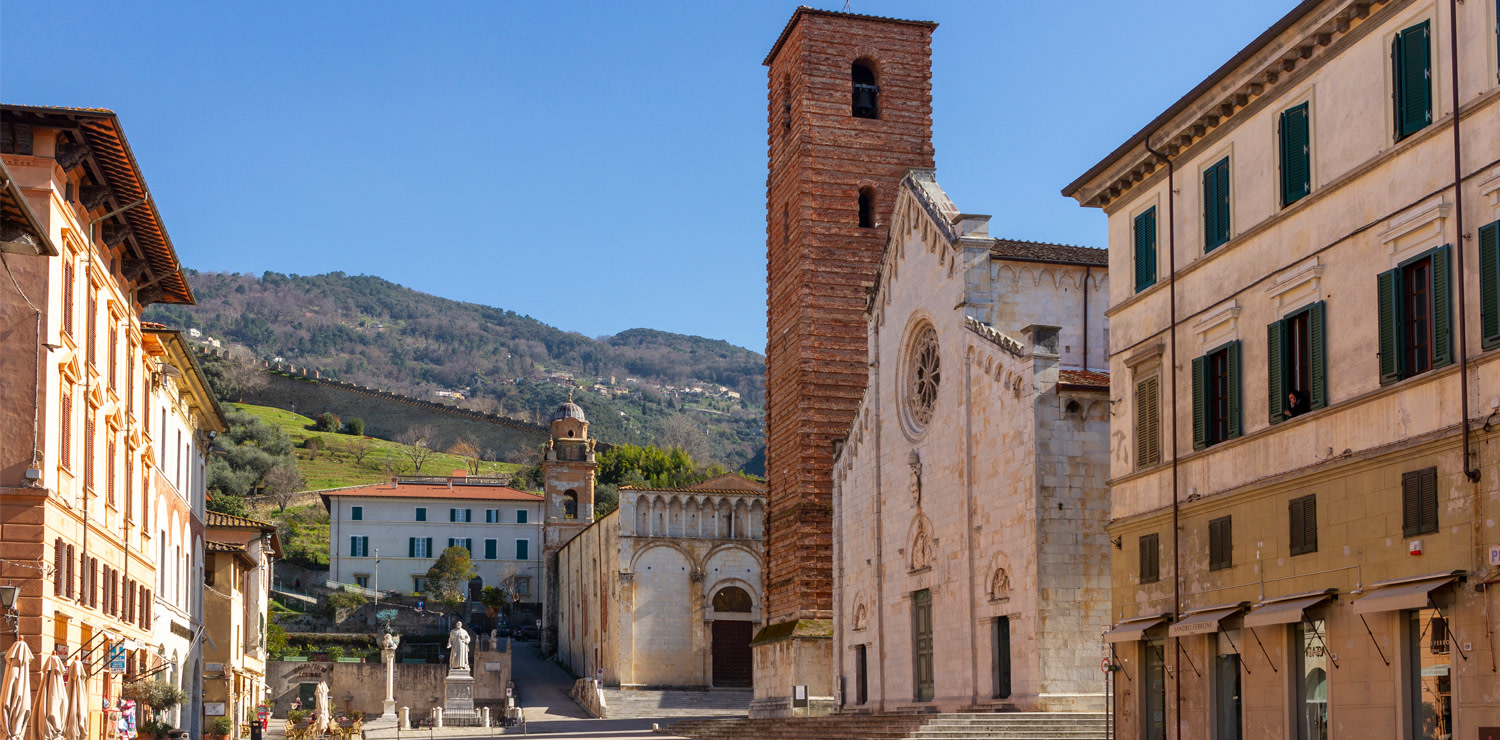The most beautiful villages in Versilia
Cool itineraries, secret addresses and historical curiosities: discover what to do around Versilia
Versilia is a special place, not only because of the classy elegance of its sandy golden beaches, but also for the magnificent silent presence of the mountains and hills that tower above and frame the town like huge stage scenery. These mountains - the Apuan Alps, where the famous Carrara white marble has been quarried for centuries - whose peaks shine in the sunlight like the facets of a giant diamond, and these lush green hills, are scattered with ancient villages, wonderful to visit as an alternative to days on the beach and to stock up on cool air, art and history, great food and breathtaking views. Here are some of the prettiest and most interesting, to discover or revisit.
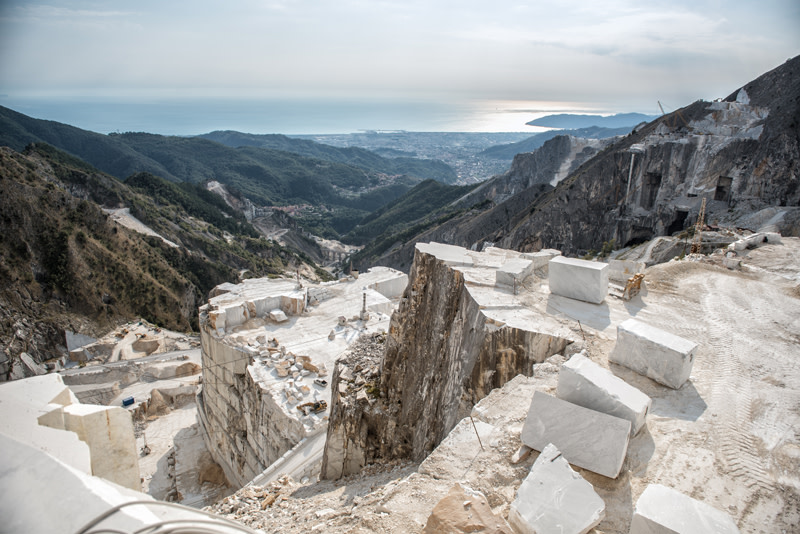 An evocative view of the white rocky landscape of the marble quarries overlooking Versilia and the sea
An evocative view of the white rocky landscape of the marble quarries overlooking Versilia and the seaA small but fascinating town, thanks partly to the workshops of artists from all over the world. The prettiest part is the square, with the cathedral of San Martino, the deconsecrated church of Sant’Agostino, the church of San Francesco and the adjoining convent and library. The little streets are paved with river stones and lined with the workshops of marble sculptors, iron forgers, gorgeous art galleries and artists with their easels and palettes in search of the perfect subject, confirmation that art is the outstanding characteristic of the historic centre (here is a short guide on tails to do and what to see in Pietrasanta). Moreover, in recent years Pietrasanta has also acquired a number of delightful boutiques where fashion and style go to town thanks to the efforts of their resourceful owners. Aperitif time has become an exclusive ritual for practically everyone, and for an alfresco dinner just pick one of the restaurants in the square and the nearby streets (Here all the must-visit restaurants in Pietrasanta).
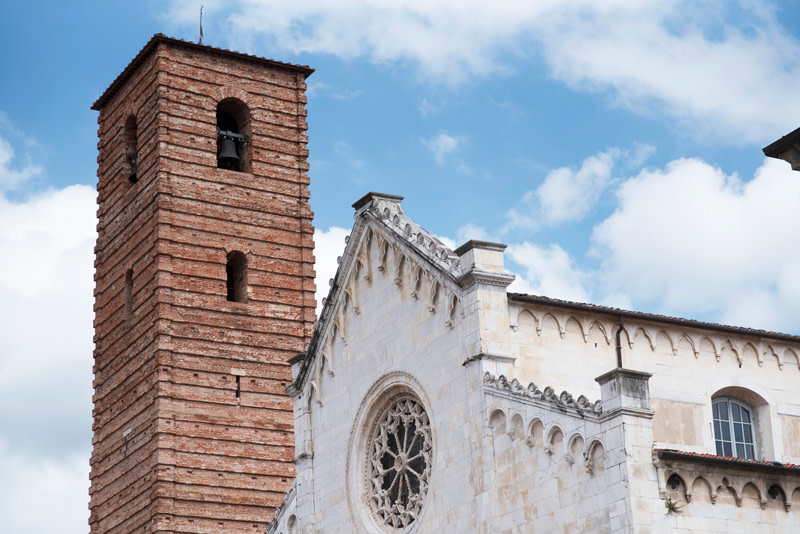 Church of San Martino in Pietrasanta ph. Pasquale Paradiso
Church of San Martino in Pietrasanta ph. Pasquale ParadisoCAMAIORE
This town occupies a strategic position halfway between the Versilia coast and the Apuan Alps, just a few minutes’ drive away. It was apparently founded in 190 BC by the Romans on the great Campus Maior plain, which probably accounts for the name. Camaiore was also one of the places visited by Archbishop Sigeric in 990 on his journey from Canterbury to Rome; in his diary he lists the town as his 27th stop. Camaiore is actually on the famous Via Francigena used by pilgrims to avoid the swampy areas of the plain.
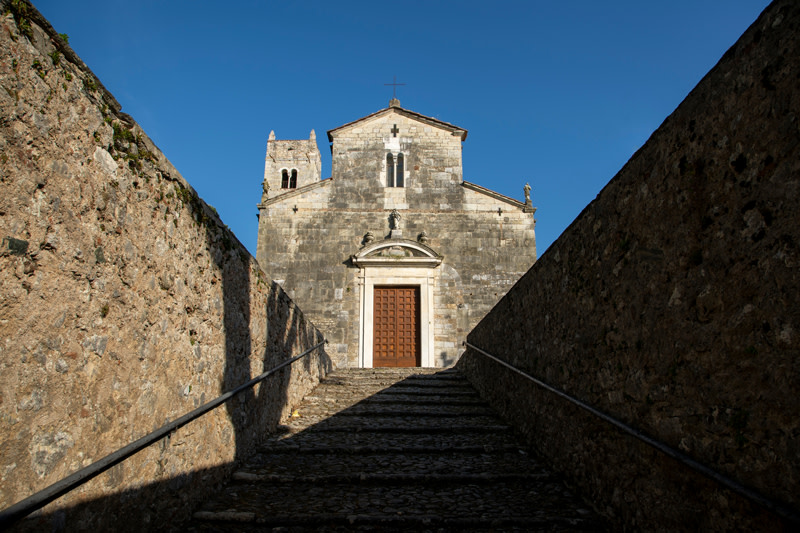 The Camaiore Parish Church of Saints Stephen and John
The Camaiore Parish Church of Saints Stephen and JohnHere you’ll find Alpine scenery and a series of options for excursions in nature and archaeology: sites such as the Grotta all’Onda, inhabited by Neanderthal man 40,000 years ago. As for what to see in town, we recommend a visit to the Collegiate church of Santa Maria Assunta and the Archeological Museum. .
LEVIGLIANI DI STAZZEMA
Levigliani di Stazzema is home to Europe’s largest cave, the Antro del Corchia. Its 53 km of tunnels and wells were discovered in 1841, and can be visited on a 1 km route that takes you right into the heart of the Apuan Alps.
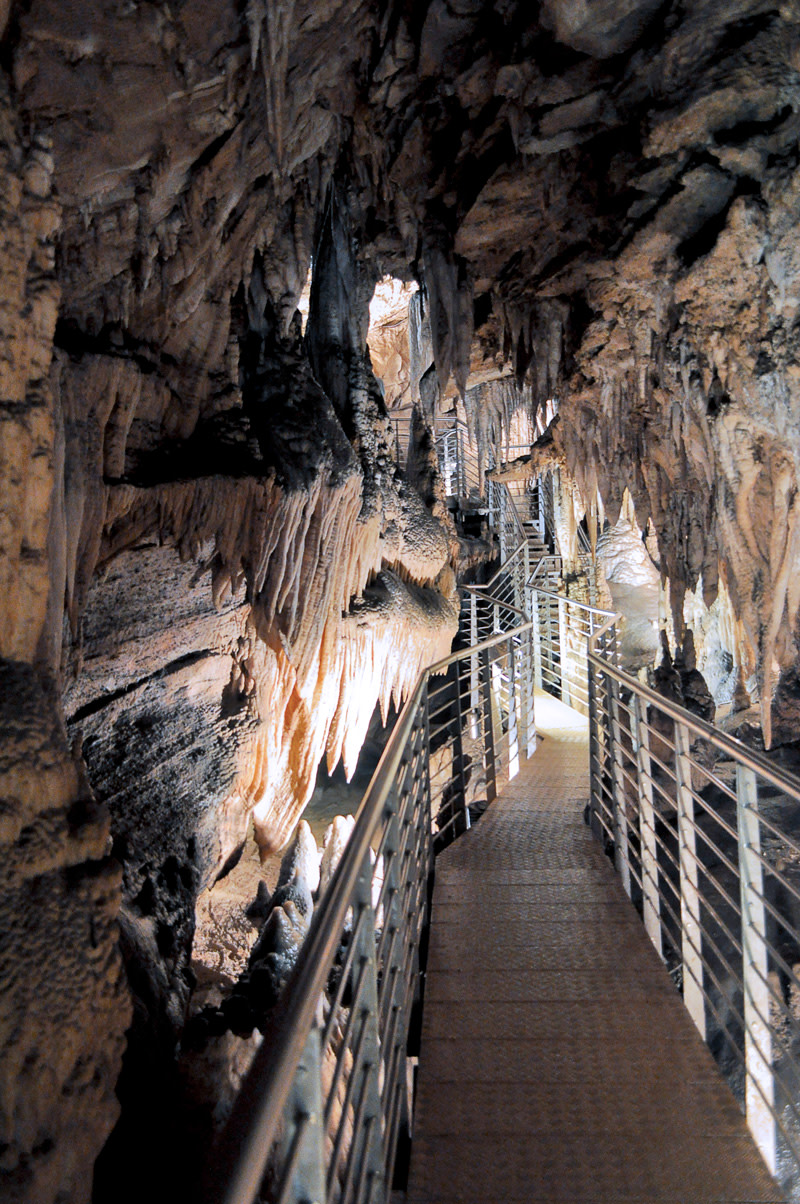 Stalactites and stalagmites in the Corchia cavern
Stalactites and stalagmites in the Corchia cavernPerched on the slopes of Mount Corchia, this small village is a timeless place where there’s not much to do apart from wander and marvel at the views.
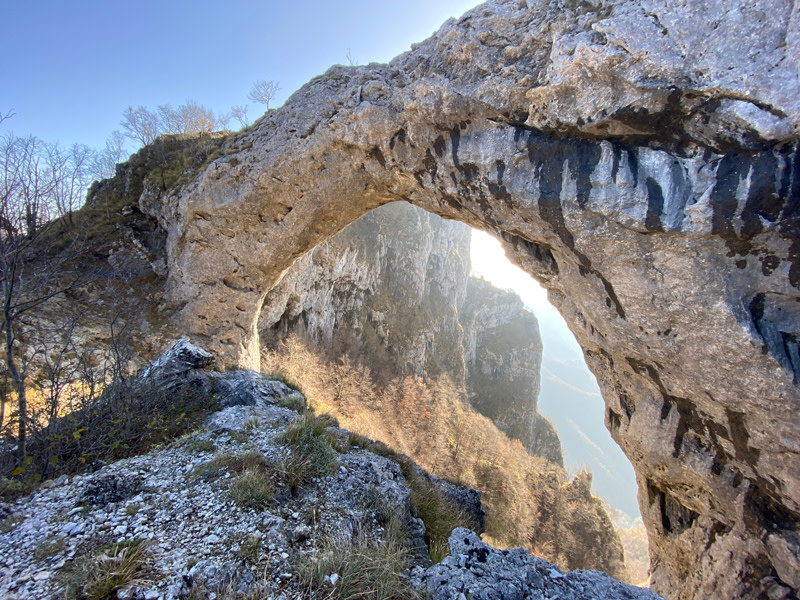 Monte Forato, Stazzema
Monte Forato, StazzemaCASOLI DI CAMAIORE
A splendid village with ancient charm, located in the foothills of the Apuan Alps, specifically Mount Matanna. It’s famous for the abundance of street art depicting scenes from mythology or everyday life on the walls of the houses. The first was painted in the mid 20th century, and the tradition continues to this day.
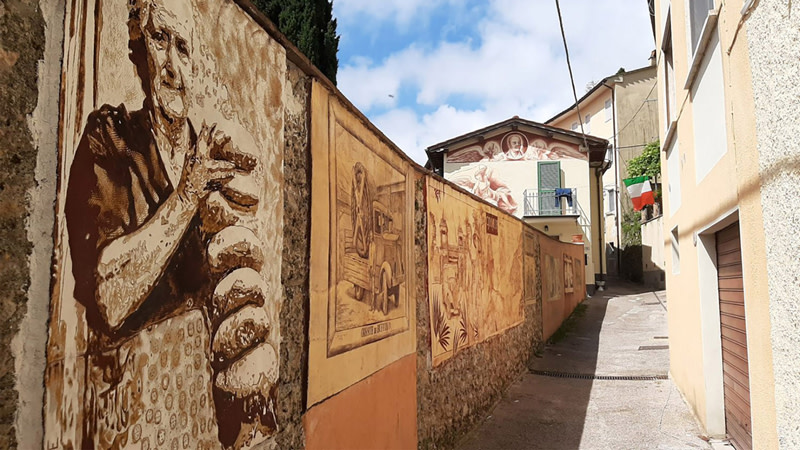 Graffiti along the streets of Casoli di Camaiore
Graffiti along the streets of Casoli di CamaioreCOLONNATA
Colonnata is the home of marble and lardo. Once upon a time this was a poor man’s food, nicknamed ‘quarryman’s strength’ by the locals; today it is a sought-after local delicacy that originated, according to some historians, in the period of the Lombards, who set up the first pig farms. Connection to the land is key to the preparation of lardo, because the pork fat is left to cure in marble basins rubbed with garlic and covered in seasonings for a minimum of six months. However, Colonnata’s history goes much further back than the Lombards, more or less to 40 BC, when the Romans established a settlement for the slaves used to extract the local marble. The village is surrounded by white quarries; narrow pedestrian streets climb the mountain between stone-built houses and the fragrance wafting from lardo factories, shops and open-air restaurants. Visit the 12th century church of San Bartolomeo with its magnificent 15th century marble crucifix attributed to the school of Michelangelo and, opposite it, the monument to the Quarryman, a statue of Christ next to a stylised mountain representing the work of quarrymen throughout history. Nearby you can also visit the Cava Romana dating back to the 1st century BC, and a quarry with a well shaft several tens of metres deep.
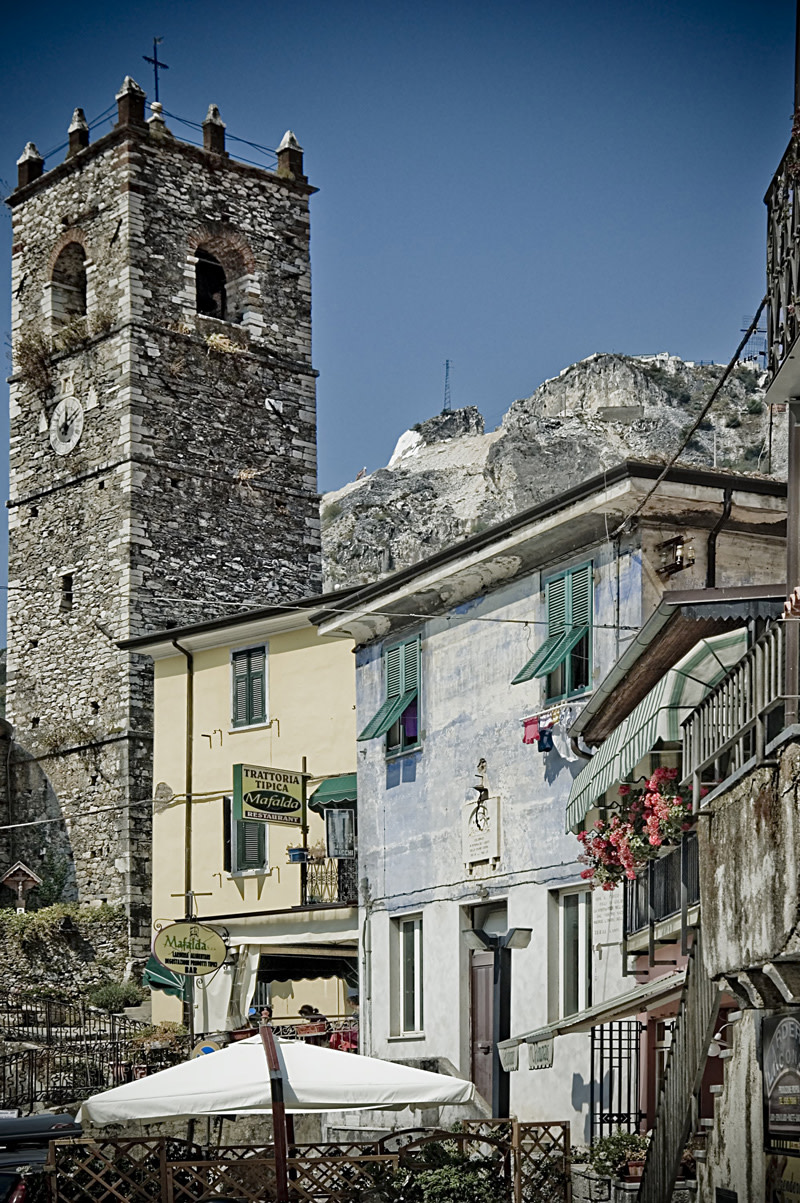 Colonnata
ColonnataFOSDINOVO
Gateway to the historical region of Lunigiana, dominating the entire village is the beautiful Malaspina Castle, one of the most beautiful and best-preserved fortresses in the area. Densely crossed by paths suitable for trekking and mountain biking, it is a pleasure to discover the lush nature of the mountains surrounding the village.
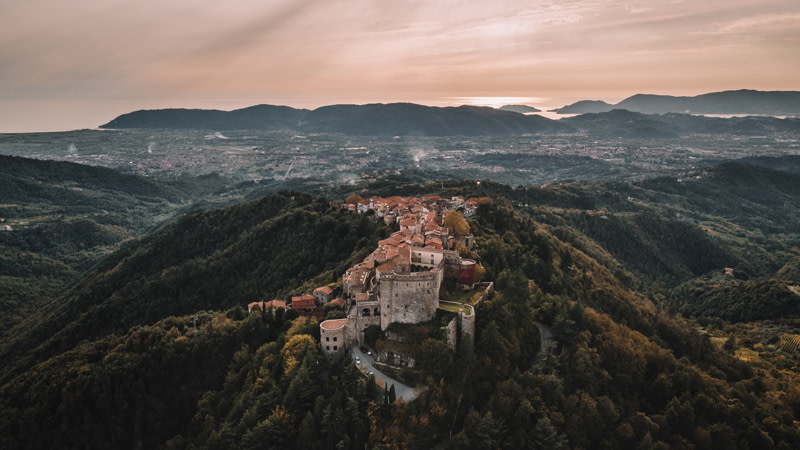 The village of Fosdinovo dominated by the imposing Malaspina Castle (ph. Federico Di Dio)
The village of Fosdinovo dominated by the imposing Malaspina Castle (ph. Federico Di Dio)





